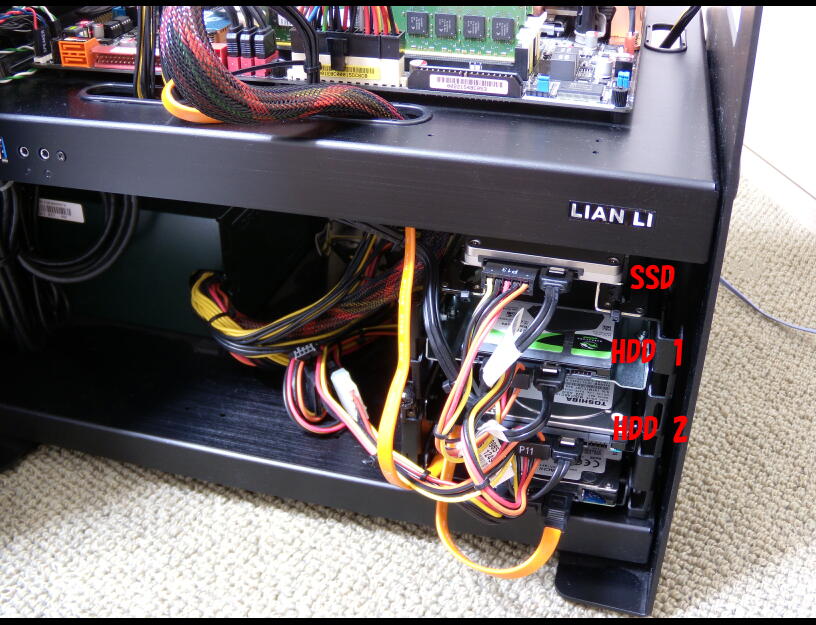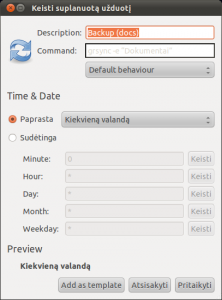
- Ubuntu grsync how to#
- Ubuntu grsync install#
- Ubuntu grsync software#
- Ubuntu grsync download#
- Ubuntu grsync windows#
Ubuntu grsync how to#
the monthly snapshot on the first of every month at 2:00 amįor more information on how to schedule a backup using cron please take a look at Executing with cron section in Backups - Shell Scripts.the weekly snapshot every Monday at 3:00 am.The settings above added to /etc/cron.d/rsnapshot run: 0 4 * * * root /usr/bin/rsnapshot dailyĠ 2 1 * * root /usr/bin/rsnapshot monthly If you open this file there are some entries commented out as reference. We will use cron to make this happen since rsnapshot includes a default cron file in /etc/cron.d/rsnapshot. With rsnapshot working correctly with the current configuration, the only thing left to do is to schedule it to run at certain intervals. If you are happy with the output and want to see it in action you can run: sudo rsnapshot daily You can also test your backup levels with the following command: Test ConfigurationĪfter modifying the configuration file is a good practice to check if the syntax is ok: sudo rsnapshot configtest You can check the comments in /etc/nf and the rsnapshot man page for more options. backup / +rsync_long_args=-bwlimit=16,exclude=coreīackup / exclude=mtab,exclude=coreĪs you can see you can see you can pass extra rsync parameters (the + append the parameter to the default list, if you remove the + sign you override it) and also exclude directories. If you are backing up a remote machine you just need to tell rsnapshot where the server is and which directories you would like to back up. If you are backing up locally to the same machine, this is as easy as specifying the directories that you want to save and following it with localhost/ which will be a sub-directory in the snapshot_root that you set up earlier.


If you are accessing a remote machine over SSH and the port to bind is not the default (port 22), you need to set the following variable with the port number: ssh_args -p 22222Īnd the most important part, you need to decide on what you would like to backup. These data will guide the rotation made by rsnapshot. In this example we will keep 6 snapshots of our daily strategy, 7 snapshots of our weekly strategy, and 4 snapshots of our monthly strategy. You tell rsnapshot to retain a specific number of backups of each kind of interval. You set these up under the BACKUP LEVELS / INTERVALS section.

Since rsnapshot uses incremental backups, we can afford to keep older backups for awhile before removing them. How many old backups you would like to keep. The root directory where all snapshots will be stored: snapshot_root /var/cache/rsnapshot/ Below you can find some of the options available there. rsync data transfer from PIK with Grsync for Windows.
Ubuntu grsync windows#
The rsnapshot configuration resides in /etc/nf. Please see instructions here for the Ubuntu for Windows variant. If the backup target is a local filesystem there is no need to set up OpenSSH. For more information on how to enable it please see OpenSSH documentation. If you want to backup a remote filesystem the rsnapshot server needs to be able to access the target machine over SSH without password.
Ubuntu grsync install#
To install it open a terminal shell and run: sudo apt-get install rsnapshot It leverages the power of rsync to create scheduled, incremental backups. Rsnapshot makes extensive use of hard links, so disk space is only used when absolutely necessary. It can take incremental backups of local and remote filesystems for any number of machines. That's as simple as dropping your rsync script into the right folder (eg: /etc/cron.weekly) and making sure it's executable by root. Btw, if your machine isn't on 24/7 then you will want to use anacrontab.

Rsnapshot is an rsync-based filesystem snapshot utility. I'm guessing that grsync is simply a frontend to rsync. Essentially, Wine is trying to re-implement enough of Windows from scratch so that it can run all those Windows applications without actually needing Windows.Multi-node Configuration with Docker-Compose Wine is an open-source Windows compatibility layer that can run Windows programs directly on any Linux desktop.
Ubuntu grsync software#
Wine is a way to run Windows software on Linux, but with no Windows required. You can also try PlayOnLinux, a fancy interface over Wine that will help you install popular Windows programs and games. Once installed, you can then double-click the app to run them with Wine.
Ubuntu grsync download#
Download Wine from your Linux distributions software repositories. From the OnWorks Windows OS you have just started, goto our file manager with the username that you want. Start any OS OnWorks online emulator from this website, but better Windows online emulator. Upload this application in such filemanager. Enter in our file manager with the username that you want. Download and run online this app named Grsync with OnWorks for free.įollow these instructions in order to run this app:


 0 kommentar(er)
0 kommentar(er)
